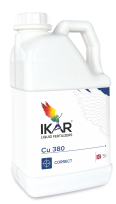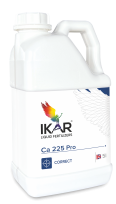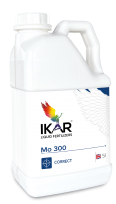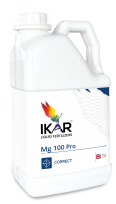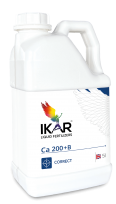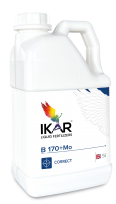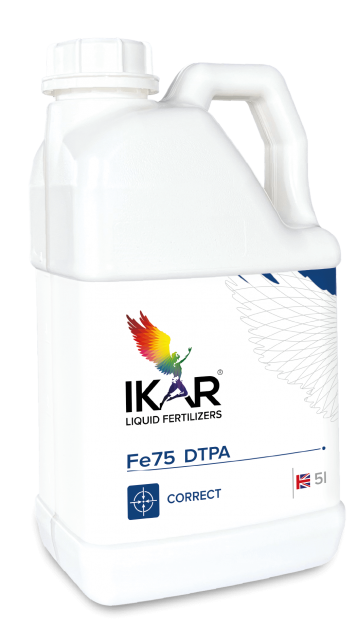
Fe75 DTPA
Iron (Fe) – it is a chloroplast building material. Iron is important for development of new plant parts and roots. Lack of iron can cause the veins of young leaves to lighten or turn yellow. High pH, poor root growth, and low soil temperatures can severely impair iron absorption.
Iron (Fe) – one of the most important trace elements, on which the uptake of many other nutrients directly depends. In absence of iron, plants find it difficult to absorb other necessary nutrients, although their content in the soil is relatively sufficient. Iron is actively involved in plant metabolic processes, they are in enzymes, activates respiration, affects the formation of chlorophyll, and auxin biosynthesis.
CONDITIONS FOR THE OCCURRENCE OF IRON DEFICIENCY:
- alkaline soil,
- soil contains copper, phosphorus, calcium, manganese and zinc,
- potassium deficiency in soil,
- soils tend to get wet,
- high or low soil temperature,
- excess organic matter,
- iron deficiency can also be caused by high levels of manganese.
Signs of iron deficiency – the plants stop growing, the youngest leaves show signs of chlorosis, signs of phosphorus and manganese deficiency.
ADVANTAGES:
- promotes the absorption of other nutrients,
- improves the uptake of potassium and phosphorus in the plant,
- increases synthesis of chlorophyll,
- increases photosynthesis,
- protection against stress in adverse growth conditions,
- treats against chlorosis,
- improves manganese uptake.
| Amount % | Amount g/l | |
| Iron (Fe), chelated with DTPA | 6,0 | 75 |
| Ammonia nitrogen (N-NH4) | 5,0 | 65 |
| pH (1:10 H2O) | 7,5-8,0 | |
| Density 20C, g/ml | 1,3-1,35 |
COMPATIBILITY
Fe 75 DTPA can be used in mixtures with many fertilizers and pesticides (insecticides, fungicides). Do not use with products containing high amounts of copper (Cu), sulphur (S), mineral oils and with alkaline products (pH > 8). Before mixing it is recommended to make a small amount of the mixture in order to check whether there is no sediment. It is recommended to spray in a small area in order to check whether there are no phytotoxic effects on plants.
